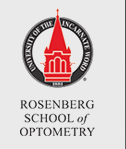Medical Subject Headings
Glaucoma; Tomography, Optical Coherence; Optic Disk; Photography
Abstract
Background: Spectral domain optical coherence tomography (SD-OCT) has become a common modality in glaucoma diagnosis. Ease of use, comfort, and a comparative normative database makes this technology very popular with patients and practitioners. However, despite the sophistication of this technology, it may miss pathologic abnormalities of the retinal nerve fiber layer (RNFL) or be misinterpreted by practitioners based upon comparisons to a normative database.
Purpose: To illustrate discordance between clinical examination and SD-OCT analysis in patients with glaucoma.
Case Reports: Examples of three patients with glaucoma who had photographically and ophthalmoscopically visible RNFL defects who had SD-OCT analyses that fell within a normative database and thus likely to be interpreted as normal, if used in isolation.
Conclusions: Though SD-OCT technology has become common in glaucoma evaluation, over-reliance on this data may lead to false-negative assessment of patients who truly have glaucoma. Spectral domain optical coherence tomography provides valuable adjunctive information for glaucoma evaluation but must be correlated with other clinical assessments such as perimetry, ophthalmoscopy and photography.
Recommended Citation
Sowka J, Rousso L. Case Series: Discordance Between Visible Retinal Nerve Fiber Layer Defects and Spectral Domain Optical Coherence Tomographic Analysis in Patients with Glaucoma. Optometric Clinical Practice. 2020; 2(1). https://doi.org/10.37685/uiwlibraries.2575-7717.2.1.1011
Creative Commons License

This work is licensed under a Creative Commons Attribution-NonCommercial 4.0 International License
Digital Object Identifier (DOI)
10.37685/uiwlibraries.2575-7717.2.1.1011

